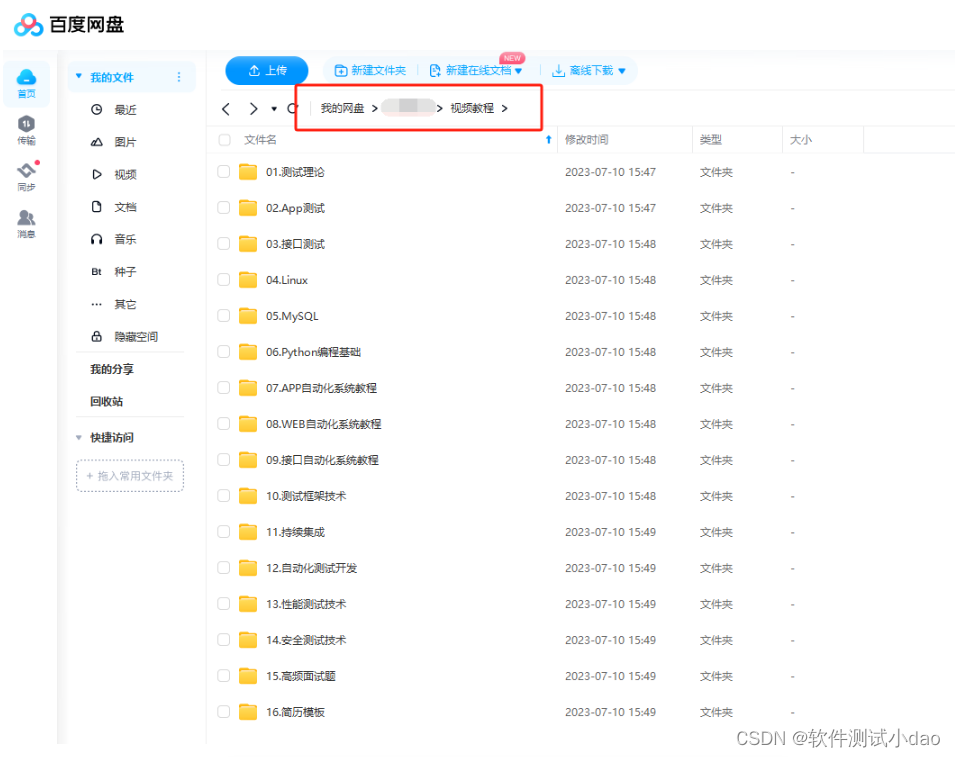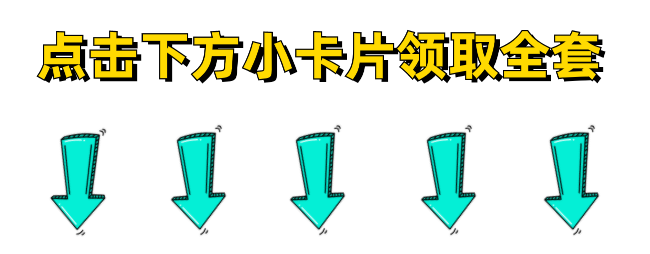编写断言
使用assert编写断言
pytest允许你使用python标准的assert表达式写断言;
例如,你可以这样做:
| 1 2 3 4 5 6 7 8 | # test_sample.py
def func(x):
return x + 1
def test_sample():
assert func(3) == 5
|
如果这个断言失败,你会看到func(3)实际的返回值:
| 1 2 3 4 5 6 7 8 9 10 11 12 13 14 15 16 17 18 | /d/Personal Files/Python/pytest-chinese-doc/src (5.1.2)
λ pytest test_sample.py
================================================= test session starts =================================================
platform win32 -- Python 3.7.3, pytest-5.1.2, py-1.8.0, pluggy-0.12.0
rootdir: D:\Personal Files\Python\pytest-chinese-doc\src, inifile: pytest.ini
collected 1 item
test_sample.py F [100%]
====================================================== FAILURES ======================================================= _____________________________________________________ test_sample _____________________________________________________
def test_sample():
> assert func(3) == 5
E assert 4 == 5
E + where 4 = func(3)
test_sample.py:28: AssertionError
================================================== 1 failed in 0.05s ==================================================
|
pytest支持显示常见的python子表达式的值,包括:调用、属性、比较、二进制和一元运算符等
这允许你在没有模版代码参考的情况下,可以使用的python的数据结构,而无须担心丢失自省的问题;
同时,你也可以为断言指定了一条说明信息,用于失败时的情况说明:
| 1 | assert a % 2 == 0, "value was odd, should be even"
|
编写触发期望异常的断言
你可以使用pytest.raises()作为上下文管理器,来编写一个触发期望异常的断言:
| 1 2 3 4 5 6 7 8 9 10 | import pytest
def myfunc():
raise ValueError("Exception 123 raised")
def test_match():
with pytest.raises(ValueError):
myfunc()
|
当用例没有返回ValueError或者没有异常返回时,断言判断失败;
如果你希望同时访问异常的属性,可以这样:
| 1 2 3 4 5 6 7 8 9 10 11 | import pytest
def myfunc():
raise ValueError("Exception 123 raised")
def test_match():
with pytest.raises(ValueError) as excinfo:
myfunc()
assert '123' in str(excinfo.value)
|
其中,excinfo是ExceptionInfo的一个实例,它封装了异常的信息;常用的属性包括:.type、.value和.traceback;
注意:在上下文管理器的作用域中,raises代码必须是最后一行,否则,其后面的代码将不会执行;所以,如果上述例子改成:
| 1 2 3 4 | def test_match():
with pytest.raises(ValueError) as excinfo:
myfunc()
assert '456' in str(excinfo.value)
|
则测试将永远成功,因为assert '456' in str(excinfo.value)并不会执行;
你也可以给pytest.raises()传递一个关键字参数match,来测试异常的字符串表示str(excinfo.value)是否符合给定的正则表达式(和unittest中的TestCase.assertRaisesRegexp方法类似):
| 1 2 3 4 5 6 7 8 9 10 | import pytest
def myfunc():
raise ValueError("Exception 123 raised")
def test_match():
with pytest.raises((ValueError, RuntimeError), match=r'.* 123 .*'):
myfunc()
|
pytest实际调用的是re.search()方法来做上述检查;并且,pytest.raises()也支持检查多个期望异常(以元组的形式传递参数),我们只需要触发其中任意一个;
pytest.raises还有另外的一种使用形式:
首先,我们来看一下它在源码中的定义:
| 1 2 3 4 5 6 7 8 | # _pytest/python_api.py
def raises( # noqa: F811
expected_exception: Union["Type[_E]", Tuple["Type[_E]", ...]],
*args: Any,
match: Optional[Union[str, "Pattern"]] = None,
**kwargs: Any
) -> Union["RaisesContext[_E]", Optional[_pytest._code.ExceptionInfo[_E]]]:
|
它接收一个位置参数expected_exception,一组可变参数args,一个关键字参数match和一组关键字参数kwargs;
接着往下看:
| 1 2 3 4 5 6 7 8 9 10 11 12 13 14 15 16 17 18 19 20 21 22 23 24 | # _pytest/python_api.py
if not args:
if kwargs:
msg = "Unexpected keyword arguments passed to pytest.raises: "
msg += ", ".join(sorted(kwargs))
msg += "\nUse context-manager form instead?"
raise TypeError(msg)
return RaisesContext(expected_exception, message, match)
else:
func = args[0]
if not callable(func):
raise TypeError(
"{!r} object (type: {}) must be callable".format(func, type(func))
)
try:
func(*args[1:], **kwargs)
except expected_exception as e:
# We just caught the exception - there is a traceback.
assert e.__traceback__ is not None
return _pytest._code.ExceptionInfo.from_exc_info(
(type(e), e, e.__traceback__)
)
fail(message)
|
其中,args如果存在,那么它的第一个参数必须是一个可调用的对象,否则会报TypeError异常;同时,它会把剩余的args参数和所有kwargs参数传递给这个可调用对象,然后检查这个对象执行之后是否触发指定异常;
所以我们有了一种新的写法:
| 1 2 3 4 5 | pytest.raises(ZeroDivisionError, lambda x: 1/x, 0)
# 或者
pytest.raises(ZeroDivisionError, lambda x: 1/x, x=0)
|
这个时候如果你再传递match参数,是不生效的,因为它只有在if not args:的时候生效;
另外,pytest.mark.xfail()也可以接收一个raises参数,来判断用例是否因为一个具体的异常而导致失败:
| 1 2 3 | @pytest.mark.xfail(raises=IndexError)
def test_f():
f()
|
如果f()触发一个IndexError异常,则用例标记为xfailed;如果没有,则正常执行f();
注意:如果f()测试成功,用例的结果是xpassed,而不是passed;
pytest.raises适用于检查由代码故意引发的异常;而@pytest.mark.xfail()更适合用于记录一些未修复的Bug;
特殊数据结构比较时的优化
| 1 2 3 4 5 6 7 8 9 10 11 12 13 14 15 16 17 18 19 20 21 22 23 24 | # test_special_compare.py
def test_set_comparison():
set1 = set('1308')
set2 = set('8035')
assert set1 == set2
def test_long_str_comparison():
str1 = 'show me codes'
str2 = 'show me money'
assert str1 == str2
def test_dict_comparison():
dict1 = {
'x': 1,
'y': 2,
}
dict2 = {
'x': 1,
'y': 1,
}
assert dict1 == dict2
|
上面,我们检查了三种数据结构的比较:集合、字符串和字典;
| 1 2 3 4 5 6 7 8 9 10 11 12 13 14 15 16 17 18 19 20 21 22 23 24 25 26 27 28 29 30 31 32 33 34 35 36 37 38 39 40 41 42 43 44 45 46 47 48 49 50 51 52 53 54 55 56 | /d/Personal Files/Python/pytest-chinese-doc/src (5.1.2)
λ pytest test_special_compare.py
================================================= test session starts =================================================
platform win32 -- Python 3.7.3, pytest-5.1.2, py-1.8.0, pluggy-0.12.0
rootdir: D:\Personal Files\Python\pytest-chinese-doc\src, inifile: pytest.ini
collected 3 items
test_special_compare.py FFF [100%]
====================================================== FAILURES ======================================================= _________________________________________________ test_set_comparison _________________________________________________
def test_set_comparison():
set1 = set('1308')
set2 = set('8035')
> assert set1 == set2
E AssertionError: assert {'0', '1', '3', '8'} == {'0', '3', '5', '8'}
E Extra items in the left set:
E '1'
E Extra items in the right set:
E '5'
E Use -v to get the full diff
test_special_compare.py:26: AssertionError
______________________________________________ test_long_str_comparison _______________________________________________
def test_long_str_comparison():
str1 = 'show me codes'
str2 = 'show me money'
> assert str1 == str2
E AssertionError: assert 'show me codes' == 'show me money'
E - show me codes
E ? ^ ^ ^
E + show me money
E ? ^ ^ ^
test_special_compare.py:32: AssertionError
________________________________________________ test_dict_comparison _________________________________________________
def test_dict_comparison():
dict1 = {
'x': 1,
'y': 2,
}
dict2 = {
'x': 1,
'y': 1,
}
> assert dict1 == dict2
E AssertionError: assert {'x': 1, 'y': 2} == {'x': 1, 'y': 1}
E Omitting 1 identical items, use -vv to show
E Differing items:
E {'y': 2} != {'y': 1}
E Use -v to get the full diff
test_special_compare.py:44: AssertionError
================================================== 3 failed in 0.09s ==================================================
|
针对一些特殊的数据结构间的比较,pytest对结果的显示做了一些优化:
- 集合、列表等:标记出第一个不同的元素;
- 字符串:标记出不同的部分;
- 字典:标记出不同的条目;
更多例子参考pytest支持的python失败时报告的演示
为失败断言添加自定义的说明
| 1 2 3 4 5 6 7 8 9 10 11 12 13 14 | # test_foo_compare.py
class Foo:
def __init__(self, val):
self.val = val
def __eq__(self, other):
return self.val == other.val
def test_foo_compare():
f1 = Foo(1)
f2 = Foo(2)
assert f1 == f2
|
我们定义了一个Foo对象,也复写了它的__eq__()方法,但当我们执行这个用例时:
| 1 2 3 4 5 6 7 8 9 10 11 12 13 14 15 16 17 18 19 | /d/Personal Files/Python/pytest-chinese-doc/src (5.1.2)
λ pytest test_foo_compare.py
================================================= test session starts =================================================
platform win32 -- Python 3.7.3, pytest-5.1.2, py-1.8.0, pluggy-0.12.0
rootdir: D:\Personal Files\Python\pytest-chinese-doc\src, inifile: pytest.ini
collected 1 item
test_foo_compare.py F [100%]
====================================================== FAILURES ======================================================= __________________________________________________ test_foo_compare ___________________________________________________
def test_foo_compare():
f1 = Foo(1)
f2 = Foo(2)
> assert f1 == f2
E assert <src.test_foo_compare.Foo object at 0x0000020E90C4E978> == <src.test_foo_compare.Foo object at 0x0000020E90C4E630>
test_foo_compare.py:37: AssertionError
================================================== 1 failed in 0.04s ==================================================
|
并不能直观的看出来失败的原因;
在这种情况下,我们有两种方法来解决:
| 1 2 | def __repr__(self):
return str(self.val)
|
我们再执行用例:
| 1 2 3 4 5 6 7 8 9 10 11 12 13 14 15 16 17 18 19 | luyao@NJ-LUYAO-T460 /d/Personal Files/Python/pytest-chinese-doc/src (5.1.2)
λ pytest test_foo_compare.py
================================================= test session starts =================================================
platform win32 -- Python 3.7.3, pytest-5.1.2, py-1.8.0, pluggy-0.12.0
rootdir: D:\Personal Files\Python\pytest-chinese-doc\src, inifile: pytest.ini
collected 1 item
test_foo_compare.py F [100%]
====================================================== FAILURES ======================================================= __________________________________________________ test_foo_compare ___________________________________________________
def test_foo_compare():
f1 = Foo(1)
f2 = Foo(2)
> assert f1 == f2
E assert 1 == 2
test_foo_compare.py:37: AssertionError
================================================== 1 failed in 0.06s ==================================================
|
这时,我们能看到失败的原因是因为1 == 2不成立;
至于__str__()和__repr__()的区别,可以参考StackFlow上的这个问题中的回答:https://stackoverflow.com/questions/1436703/difference-between-str-and-repr
- 使用pytest_assertrepr_compare这个钩子方法添加自定义的失败说明
| 1 2 3 4 5 6 7 8 9 10 11 | # conftest.py
from .test_foo_compare import Foo
def pytest_assertrepr_compare(op, left, right):
if isinstance(left, Foo) and isinstance(right, Foo) and op == "==":
return [
"比较两个Foo实例:", # 顶头写概要
" 值: {} != {}".format(left.val, right.val), # 除了第一个行,其余都可以缩进
]
|
再次执行:
| 1 2 3 4 5 6 7 8 9 10 11 12 13 14 15 16 17 18 19 20 | /d/Personal Files/Python/pytest-chinese-doc/src (5.1.2)
λ pytest test_foo_compare.py
================================================= test session starts =================================================
platform win32 -- Python 3.7.3, pytest-5.1.2, py-1.8.0, pluggy-0.12.0
rootdir: D:\Personal Files\Python\pytest-chinese-doc\src, inifile: pytest.ini
collected 1 item
test_foo_compare.py F [100%]
====================================================== FAILURES ======================================================= __________________________________________________ test_foo_compare ___________________________________________________
def test_foo_compare():
f1 = Foo(1)
f2 = Foo(2)
> assert f1 == f2
E assert 比较两个Foo实例:
E 值: 1 != 2
test_foo_compare.py:37: AssertionError
================================================== 1 failed in 0.05s ==================================================
|
我们会看到一个更友好的失败说明;
关于断言自省的细节
当断言失败时,pytest为我们提供了非常人性化的失败说明,中间往往夹杂着相应变量的自省信息,这个我们称为断言的自省;
那么,pytest是如何做到这样的:
- pytest发现测试模块,并引入他们,与此同时,pytest会复写断言语句,添加自省信息;但是,不是测试模块的断言语句并不会被复写;
复写缓存文件
pytest会把被复写的模块存储到本地作为缓存使用,你可以通过在测试用例的根文件夹中的conftest.py里添加如下配置:
| 1 2 3 | import sys
sys.dont_write_bytecode = True
|
来禁止这种行为;
但是,它并不会妨碍你享受断言自省的好处,只是不会在本地存储.pyc文件了。
去使能断言自省
你可以通过一下两种方法:
- 在需要去使能模块的docstring中添加PYTEST_DONT_REWRITE字符串;
- 执行pytest时,添加--assert=plain选项;
我们来看一下去使能后的效果:
| 1 2 3 4 5 6 7 8 9 10 11 12 13 14 15 16 17 18 19 | /d/Personal Files/Python/pytest-chinese-doc/src (5.1.2)
λ pytest test_foo_compare.py --assert=plain
================================================= test session starts =================================================
platform win32 -- Python 3.7.3, pytest-5.1.2, py-1.8.0, pluggy-0.12.0
rootdir: D:\Personal Files\Python\pytest-chinese-doc\src, inifile: pytest.ini
collected 1 item
test_foo_compare.py F [100%]
====================================================== FAILURES ======================================================= __________________________________________________ test_foo_compare ___________________________________________________
def test_foo_compare():
f1 = Foo(1)
f2 = Foo(2)
> assert f1 == f2
E AssertionError
test_foo_compare.py:37: AssertionError
================================================== 1 failed in 0.05s ==================================================
|
断言失败时的信息就非常的不完整了,我们几乎看不出任何有用的Debug信息;
现在我也找了很多测试的朋友,做了一个分享技术的交流群,共享了很多我们收集的技术文档和视频教程。
如果你不想再体验自学时找不到资源,没人解答问题,坚持几天便放弃的感受
可以加入我们一起交流。而且还有很多在自动化,性能,安全,测试开发等等方面有一定建树的技术大牛
分享他们的经验,还会分享很多直播讲座和技术沙龙
可以免费学习!划重点!开源的!!!
qq群号:485187702【暗号:csdn11】
最后感谢每一个认真阅读我文章的人,看着粉丝一路的上涨和关注,礼尚往来总是要有的,虽然不是什么很值钱的东西,如果你用得到的话可以直接拿走! 希望能帮助到你!【100%无套路免费领取】


























 526
526











 被折叠的 条评论
为什么被折叠?
被折叠的 条评论
为什么被折叠?








